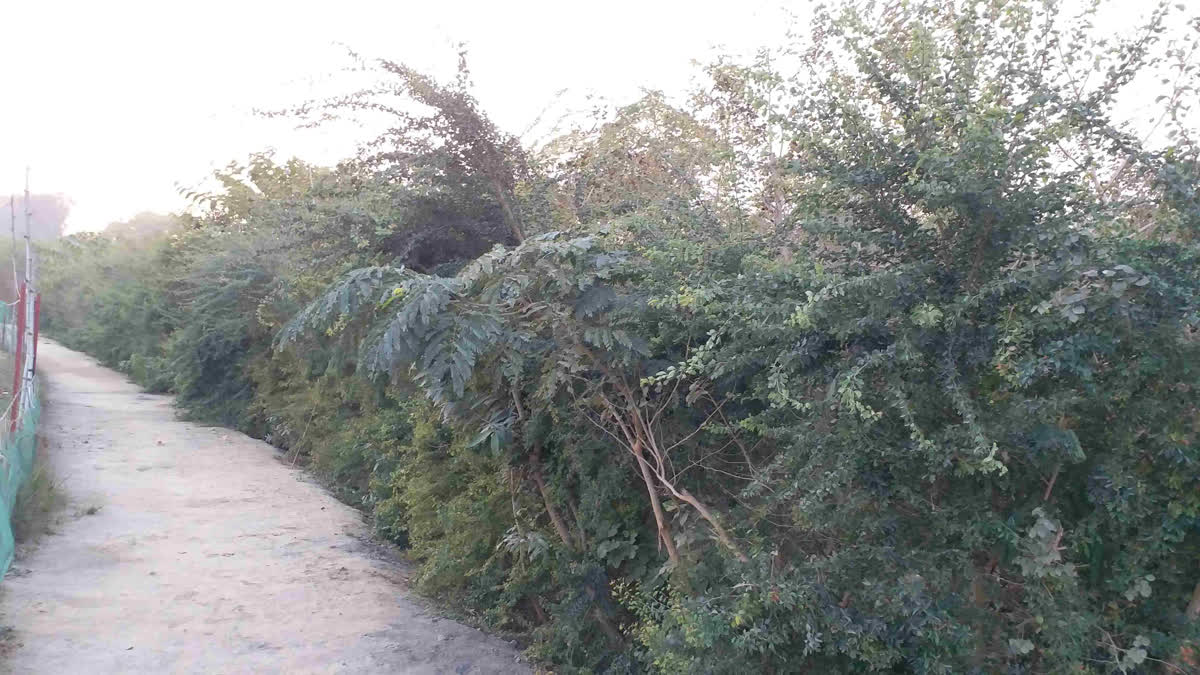Prayagraj: The forests developed around the Mahakumbh Mela area are providing clean air to lakhs of devotees.
The initiative to make the world's largest religious fair green and environment friendly has started showing results. In fact, five lakh trees have been planted on around 30 bighas of land at 10 places in Prayagraj. The trees release 11.5 crore litre of oxygen daily. All this has been made possible by Japan's Miyawaki method on which around Rs 6 crore has been spent.
The Prayagraj Municipal Corporation has created the forests using the technology. In view of Mahakumbh, planting of trees was started two years ago. At present, the plants have grown to a height of 25 to 30 feet. A single tree releases around 230 litre of oxygen in a day. At least 63 types of plants including Banyan, Peepal, Neem, Mahua, Mango and Tamarind have been planted on around 70,000 sq metre (30 bigha) of land using the Miyawaki method, Uttam Kumar, Environmental Engineer of Prayagraj Municipal Corporation. The company that has been given the contract to create and maintain the forest will take care of the trees for three years.
Fruit trees along with medicinal and ornamental plants have also been planted in the forest. Ornamental and medicinal plants include mango, Mahua, Neem, Peepal, Tamarind, Arjun, Teak, Tulsi, Amlak, Ber, Hibiscus, Kadamba, Gulmohar, Jungle Jalebi, Bougainvillea and Brahmi. This apart, plants like Sheesham, Bamboo, Oleander (Red and Yellow), Tecoma, Kachnar, Mahogany, Lemon and Drumstick have been planted in the forest.
The areas where forests have been developed are Transport Nagar, Balu Mandi, Avantika Colony Naini, Devghat Park Jhalwa, Transport Nagar Park-2, three places in Jahangirabad Naini, Dandi Neem Sarai, LIG Park Naini, Manikapur Jhunsi, Transport Nagar Park-Tube Well Number Three, behind Mahindra Workshop in Transport Nagar, Dev Prayag Phase 2, Park B, Dev Prayag Phase 2, Park C and Industrial Area Nevada Samgor Naini.

Kumar said the civic body had practised multi-layer plantation on 15 bighas in the Industrial Area of Naini. "Being an industrial area, people used to dump garbage on the vacant government land. Due to this, people living in the nearby villages used to complain of foul smell. It was difficult to breathe. If people used to put white clothes outside to dry, then by evening it would turn black. We had to work hard to get the land leveled and make it suitable for plantation. We first got the garbage cleared. After this, the soil was removed to a depth of one metre. The onee meter pit was filled with straw, organic manure and sawdust. After this, plantation was done in it," he said.
Kumar said plants whose height was eight to 10 feet were planted at the bottom. It was followed by plants of 15 to 20 feet of height. Plants like banyan, neem, peepal, jackfruit, mango, guava, kadam were planted later. Traditional leafy trees like banyan release as much oxygen in a year as 10 people breathe in a year. Former Chairman and retired Professor of Botany of Prayagraj University, NB Singh said that the amount of oxygen depends on the length of the tree and the area of its shade. In normal conditions, a healthy tree releases around 230 litres of oxygen in a day, whereas a normal person needs about 550 litres of oxygen in 24 hours.
At least 12 days have passed the since Mahakumbh started. More than 10 crore people have visited the fair in 11 days. On normal days, 20 to 30 lakh devotees take a dip in Ganga river. Around 45 crore devotees are expected to visit the fair and the forests are helping in balanacing the carbon emissions.

What is Miyawaki technique
Prof Singh said Miyawaki technique is a Japanese method of plantation. It is used when large number of plants are required on limited space. The technique was developed by Japanese botanist Akira Miyawaki in 1970.
How is the plantation done
Under the technique, trees and plants of native species are planted in multi-layers close to each other. Plants grow 10 times faster under the technique. Prof Singh said plants planted using Miyawaki technique absorb more carbon and release more oxygen than traditional trees. This technique promotes biodiversity like natural forests. It also improves the quality of soil. This technique is very effective in purifying the environment in urban areas, he said.



